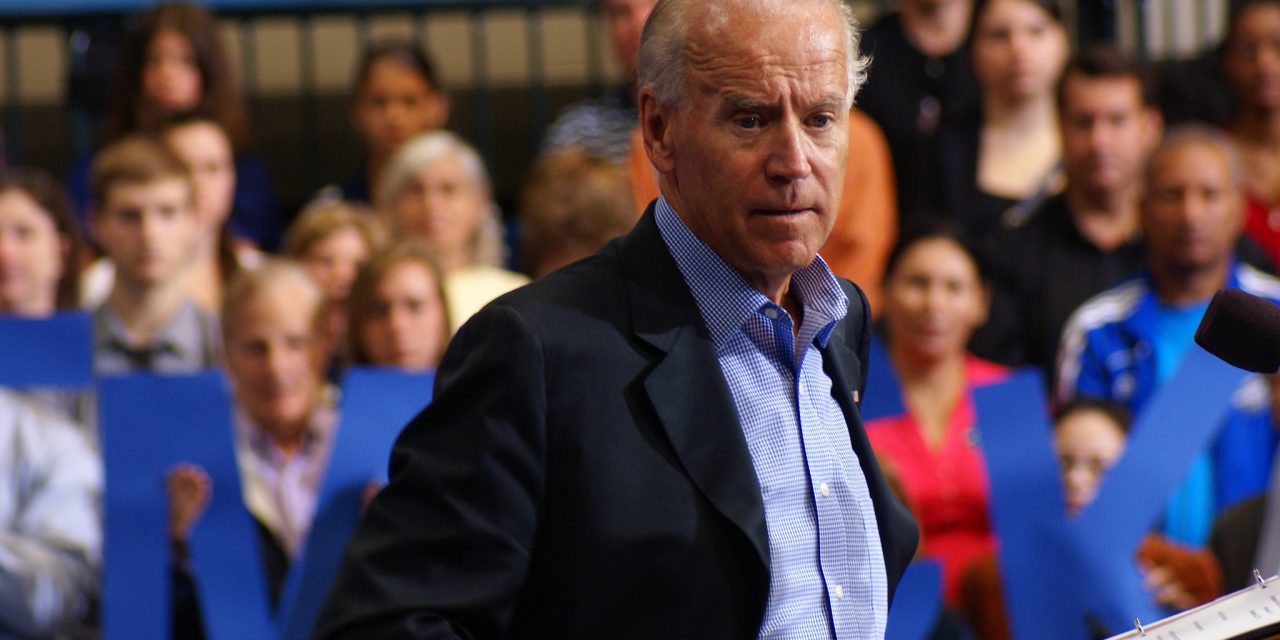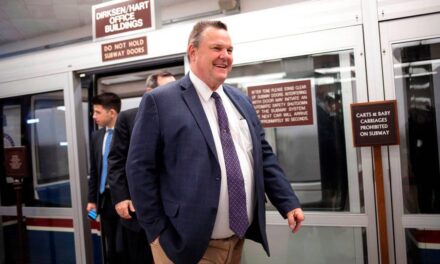If you want to know how the president’s prospects for reelection are looking, you’ll get two different answers depending on whether you read the New York Times or Politico. Trip Gabriel in the Times emphasizes that formerly Democratic white working class voters in the Youngstown, Ohio area are sticking with Trump despite his failure to improve their economic situation. Alex Isenstadt of Politico puts the focus on Trump’s reaction to internal polling that shows him behind Joe Biden in key Rust Belt states like Pennsylvania, Michigan and Wisconsin.
While, technically, both of these narratives can be true, they do appear to conflict with each other. Gabriel gives the impression that Biden is out of touch on trade and won’t be able to win the support of an appreciable number of these voters.
But even though stresses on families and communities are already acute, Mr. Trump appears to have lost little of his blue-collar support here.
It is a sign of how tight a bond he has with voters who were once staunch Democrats, in an allegiance as much cultural as economic. But it also undermines the argument of the Democrats’ leading 2020 candidate, Joseph R. Biden Jr., that he would be the best nominee to win back Midwest states because of his own appeal to working-class voters.
Isenstadt gives the impression that Biden has already burst into the lead in these key states and the Trump campaign is scrambling to reestablish his advantage.
The moves come at a time of growing anxiety over the geographic linchpin of his 2020 hopes. The Trump campaign recently completed a 17-state polling project that concluded the president trails Joe Biden in Pennsylvania, Wisconsin, and Michigan, according to two people briefed on the results.
Ohio may be moving in the Republican column and perhaps it shouldn’t be considered a swing-state anymore. But there isn’t any difference economically or culturally between the Obama/Trump voters of Youngstown and the Obama/Trump voters in neighboring Western Pennsylvania. I doubt there’s a lot of difference between the laid off auto workers in Ohio and the laid off auto workers in Michigan and Wisconsin. Each of these states has its own unique demographics that help determine whether Trump is leading or trailing Biden (or other Democrats) in the polls. Similarly, the road to victory for a Democrat could be slightly different in each state.
Turnout in Detroit was down sharply in 2016, so a better performance there might be sufficient to win Michigan in 2020. Clinton netted essentially the same number of votes out of Philadelphia and Pittsburgh as Obama had in 2012, and she did better than he ever did in the suburbs. In Pennsylvania, a Democrat will likely have to recover some support from white working class former Democrats to prevail. It would definitely be risky to assume that the Democratic nominee can improve enough on Clinton’s record-setting performance in the suburbs to compensate for losses elsewhere in the state. If this is true of Pennsylvania, it’s doubly true of Ohio.
Improved urban turnout in Milwaukee and Detroit is almost a given now that there are Democratic governors in those states, but do the Democrats want to bank on that as being sufficient to change the statewide results?
When you read Trip Gabriel’s reporting in the Times, it’s easy to get the impression that Obama/Trump voters are not only unreachable but that they’re not worthy of being reached:
One of those voters is Darrell Franks, a retired tool and die maker, who was once a Democrat but now votes Republican.
“What I want from a president is the rest of the world to look at him and go, ‘Don’t mess with that guy, he will get even,’” Mr. Franks said one morning in the Yankee Kitchen in Vienna Township, Ohio. “I don’t want kinder, gentler. I don’t want some female that wants her agenda.”
Gabriel includes this analysis from Tim O’Hara, the vice president of United Auto Workers Local 1112.
“I don’t think those Trump people are going to flip back, even if it’s Joe Biden, who has a lot of support in this area,” he said. “I think they’re dug in on Trump. Whatever happens, they’re going to go down with the ship with him.”
It seems odd to say that Joe Biden “has a lot of support in the area,” but that no one will actually vote for him. O’Hara also fails to answer the key question of whether Ohio is winnable if every auto worker in Ohio opts to go down with Trump’s ship. Still, we’re left with the impression that Biden’s “strong support” in his community is fool’s gold.
You will come away with a much different take on the state of play if you rely on Isenstadt’s reporting:
People close to the president insist they’re not panicked. They think Biden’s numbers will drop once the honeymoon stage of his campaign wears off…
…Yet there’s nagging concern after a midterm election in which Republicans across the Midwest got clobbered — and as Trump’s trade war is threatening farmers and factory workers who helped put him in office.
In Isenstadt’s telling, it could be the president’s campaign team that is pursuing a false dream in thinking they can repeat their 2016 Electoral College victory by using the same collection of Rust Belt states. At least based on their own internal polling of a matchup with Biden, this looks like an uphill climb, and banking on Biden’s numbers to tank is a hope rather than a strategy.
Ultimately, we cannot know if Biden will be the nominee, nor whether he can win back an appreciable number of Obama/Trump voters, but those aren’t the questions we need to answer right now. First, we need to understand which states are winnable for a Democrat if they don’t make inroads with white working class voters. Then we need to figure out if there’s an Electoral College path to victory in that scenario. If there is not, or if it looks like a very long shot, then finding a challenger for Trump that has “strong support” in these communities will be vitally important.
Right now, a plurality of Democrats think Biden is the safest choice. Their mood may change as the campaign unfolds. They may decide they don’t want the safe choice. They may decide that Biden is not a safe choice after all. What I hope they don’t decide is that they can bank on winning solely through better mobilization of Clinton’s urban/suburban coalition. Regardless of who wins the nomination, they need to do better with white working class voters than Clinton did or we’ll all be biting our nails on election night.
It’s not just me issuing this warning. The election results out of Australia should jolt liberals out of any sense of optimism about the coming election cycle.






